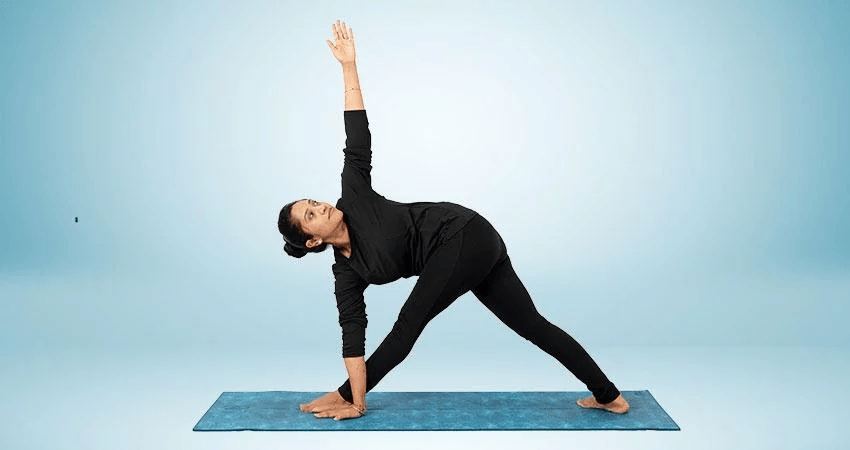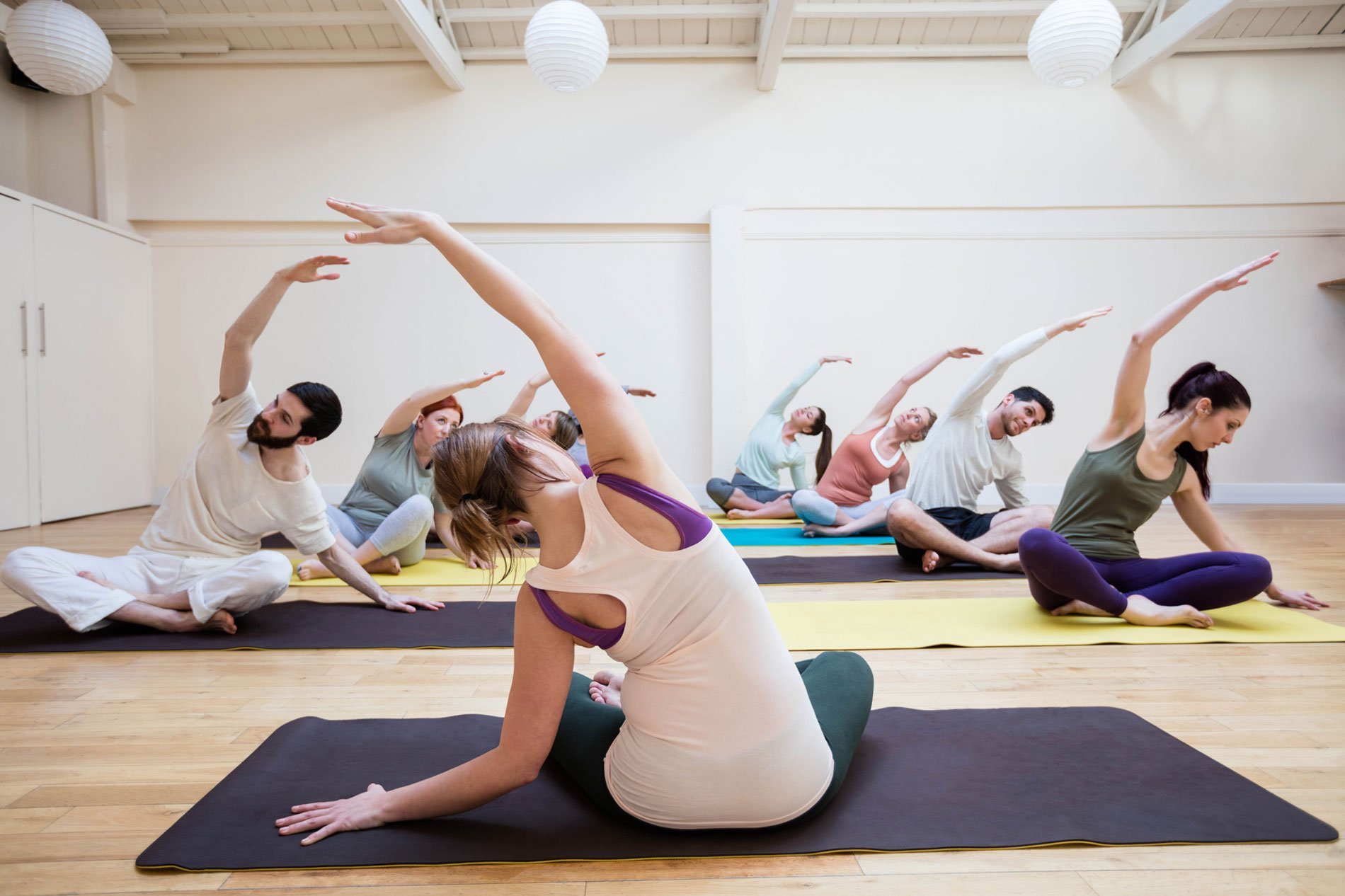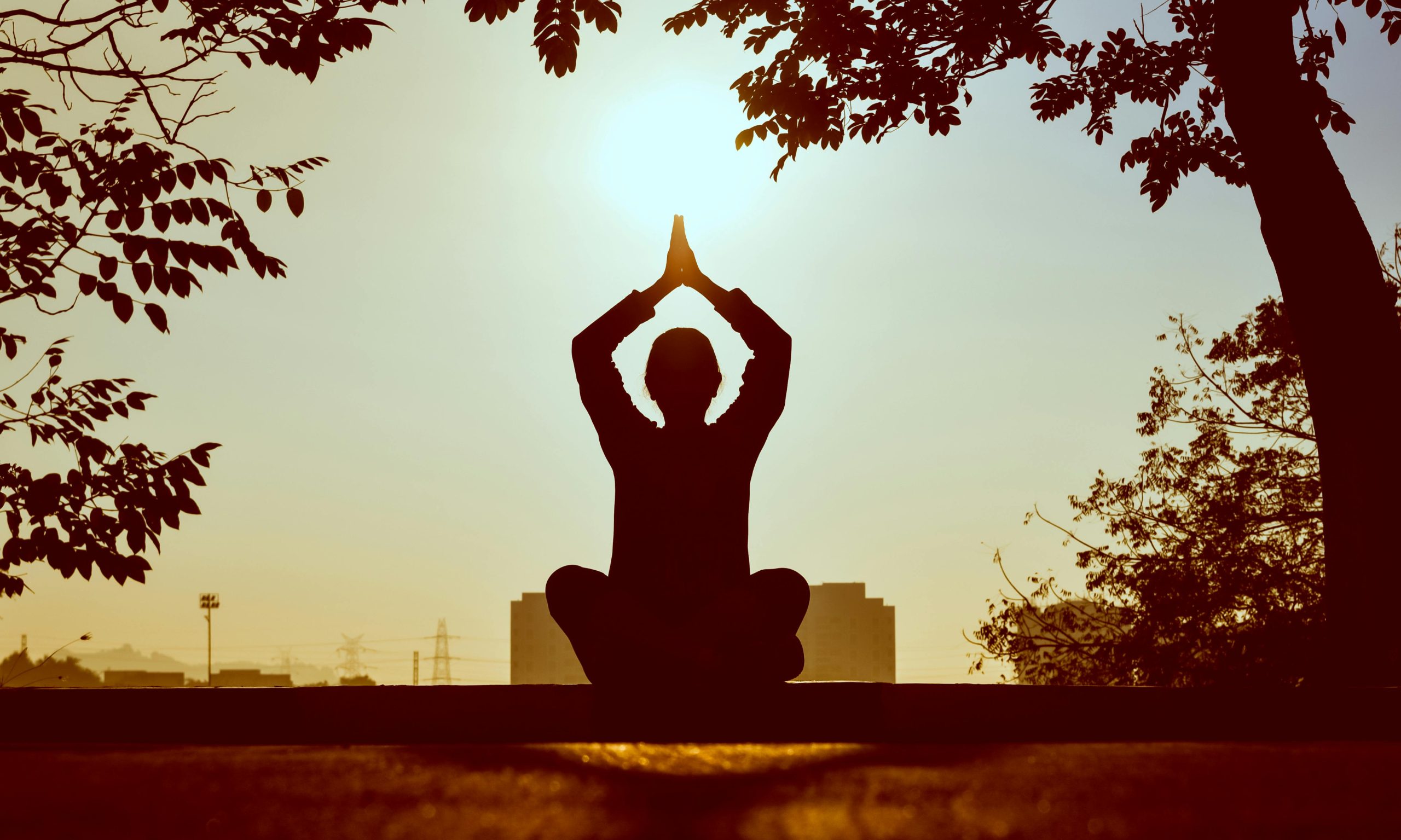Triangle Pose: Exploring its benefits with step-by-step instructions

The Triangle Pose, or Trikonasana in Sanskrit, is one of the foundational postures in yoga, offering a blend of strength, flexibility, and balance. Whether you’re a beginner or an advanced practitioner, the Triangle Pose provides deep benefits that align your body and mind. In this article, we will explore the triangle pose benefits, provide step-by-step instructions on how to do Triangle Pose, and explain its profound effects on your well-being.
Benefits of Triangle Pose (Trikonasana)
The Triangle Pose benefits are extensive, touching various aspects of physical and mental health. Here are some of the key advantages:
1. Improves Balance and Stability
The Triangle Pose helps improve overall balance by encouraging proper weight distribution between the legs. As you hold the pose, your core muscles are engaged, strengthening your ability to stabilize and control your movements.
2. Strengthens Legs and Core
This pose specifically targets the muscles in your legs, including the quadriceps, hamstrings, and calves. It also works your abdominal muscles, leading to better core strength. By enhancing your lower body and core, Trikonasana provides a solid foundation for more complex poses.
3. Increases Flexibility
One of the most noticeable benefits of Triangle Pose is the increase in flexibility, especially in the hips, hamstrings, and spine. This stretching aspect is essential for countering the effects of sedentary lifestyles, promoting freedom of movement.
4. Relieves Back Pain
For individuals dealing with mild back pain, the triangle pose sanskrit can be a great relief. As you stretch your spine and open your chest, tension is released, and the spine lengthens. Consistent practice can help alleviate pain caused by tight muscles and poor posture.
5. Stimulates Digestion and Circulation
The twisting motion of the upper body in the pose aids in stimulating internal organs, particularly those related to digestion. This gentle compression and release motion helps boost digestion and can even improve circulation throughout the body.
6. Enhances Mental Focus
The balancing element of Triangle Pose encourages mental clarity and concentration. Holding this posture requires focus, which helps quiet the mind, improving mental acuity and relieving stress.
Step-by-Step Instructions: How to Do Triangle Pose
Performing the Triangle Pose (Trikonasana) requires attention to alignment, breath control, and balance. Follow these step-by-step instructions on how to do Triangle Pose to ensure proper form:
1. Begin in a Standing Position (Tadasana)
Start by standing tall with your feet hip-width apart, grounding through your heels. Engage your thighs and draw your belly in towards your spine.
2. Step Your Feet Apart
Step your feet about 3 to 4 feet apart. Your right foot should be turned out 90 degrees, while your left foot is slightly turned inward, roughly 45 degrees. Ensure that your heels are in a straight line, promoting alignment through the legs.
3. Extend Your Arms
Inhale deeply and extend your arms out to your sides, parallel to the floor, palms facing down. This extension should feel strong and active, reaching through your fingertips.
4. Hinge at Your Hips
Exhale and begin to hinge at your right hip, extending your torso over your right leg. Keep your legs straight but avoid locking your knees. Allow your hips to remain open, pushing your left hip back slightly as you lower down.
5. Reach Down and Up
As your torso lowers, reach your right hand down towards your right shin, ankle, or the floor. At the same time, extend your left hand towards the ceiling, keeping both arms in a straight line. Your gaze can be directed towards your left hand or down at your right foot, depending on what feels best for your neck.
6. Align and Open Your Chest
Focus on keeping your chest open and lifted. Avoid collapsing forward by rotating your torso upwards. Your shoulders should stack on top 10 yoga asanas of one another, creating a gentle twist in the spine.
7. Hold the Pose
Hold the Triangle Pose for 30 seconds to 1 minute, maintaining steady and controlled breathing. As you breathe deeply, feel the stretch in your legs, hips, and chest.
8. Exit the Pose
To release the posture, inhale and lift your torso back up to standing by pressing firmly through your feet. Switch the alignment of your feet and repeat the same steps on the left side.
Triangle Pose Sanskrit Name and Meaning
In Sanskrit, Triangle Pose is known as Trikonasana, a combination of two words: “Trikona” meaning triangle and “Asana” meaning pose. The triangle is a symbol of stability, balance, and harmony, which is reflected in the benefits this posture brings to the practitioner.
Trikonasana represents the intersection of three main points: mind, body, and breath. By practicing this pose, you engage all three aspects, creating a holistic experience that connects your physical practice with deeper mental clarity.
Common Mistakes to Avoid in Triangle Pose
Even though Triangle Pose sanskrit is a beginner-friendly posture, there are a few common mistakes to watch out for to maximize its benefits:
1. Collapsing the Chest
Many practitioners tend to collapse the chest forward, which restricts the breath and reduces the spinal twist. Always focus on keeping the chest open and lifted.
2. Overextending the Front Knee
Locking or hyperextending the front knee can strain the joints and reduce the effectiveness of the pose. Keep the knee soft and slightly bent if necessary.
3. Misaligned Hips
Your hips should remain open throughout the posture. Avoid the tendency to let your back hip collapse forward.
4. Leaning on the Front Leg
While reaching down to touch the floor or ankle, avoid using your front leg for support. The goal is to balance your body evenly and engage your core muscles to maintain the position.
Modifications and Variations for Triangle Pose
Not everyone can access the full expression of Triangle Pose right away. Here are a few ways to modify the pose to suit your level of flexibility and strength:
1. Use a Block
Place a yoga block next to your front foot. Rest your hand on the block for support, ensuring you maintain proper alignment while gradually deepening your stretch.
2. Shorten Your Stance
If you’re having trouble balancing or stretching fully, shorten the distance between your feet. A narrower stance can help you gain stability without sacrificing form.
3. Adjust Arm Position
If extending your top arm is difficult, you can keep your hand on your hip while focusing on keeping your chest open.
Final Thoughts
The Triangle Pose Sanskrit offers a wealth of benefits for both the body and mind. By following proper alignment and staying mindful of common mistakes, you can make this pose a rewarding part of your practice. Whether you’re looking to improve flexibility, strengthen your core, or enhance your mental focus, Trikonasana provides a pathway to achieving those goals.
If you’re interested in practicing Triangle Pose and other postures in a supportive, nurturing environment, visit Arya Power Yoga Academy for more information about our classes and workshops.



